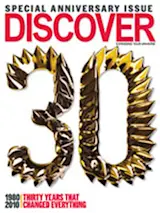Medicine has seen its equivalent of the splitting of the atom: the ability to take apart, reassemble, and release the incredible power locked in genes and cells. The breakthrough has resulted from the merger of interlocking fields—gene therapy and cell therapy—which are now spawning near-miraculous treatments and cures. But where atomic research had a single, explosive debut, gene- and cell-based treatments have emerged in fits, after many false starts.
One huge step forward came in 1985, when researchers began shuttling genes into mammalian cells by first transferring them to a virus. The genes hitched a ride inside the virus, ultimately entering the cell nucleus and working alongside native genes already in place. Then things went wrong. Not only did gene therapy fail to cure disease, but Jesse Gelsinger, a boy with a rare metabolic disorder, died in a clinical trial in 1999.
Only recently have cell and gene therapy begun ...














